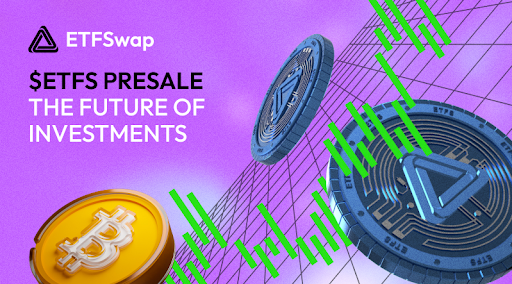Hyperledger Fabric has emerged as a game-changer, particularly in the realm of digital asset tokenization. This open-source blockchain framework, developed under the Linux Foundation, is reshaping how businesses approach asset management, security, and transparency. Let’s delve into how Hyperledger Fabric is revolutionizing the world of digital asset tokenization and its implications for various industries.
Hyperledger Fabric is a modular and extensible enterprise-grade distributed ledger technology (DLT) platform. It’s designed to address the unique needs of businesses and organizations, offering a highly customizable and scalable solution for building and deploying decentralized applications.
Asset tokenization, on the other hand, is the process of converting rights to an asset into a digital token on a blockchain. This can include anything from real estate and artwork to financial instruments and intellectual property.
Hyperledger Fabric’s architecture makes it particularly well-suited for asset tokenization. Here’s why:
- Permissioned Network: Hyperledger Fabric operates on a permissioned network, unlike public blockchains. This means participants are known and trusted, ensuring a higher level of privacy and security — crucial for tokenizing high-value assets.
- Modularity and Flexibility: The platform’s modular design allows for easy integration of various components. Organizations can tailor the platform to their specific tokenization requirements, whether it’s for real estate, commodities, or intellectual property.
- Smart Contracts (Chaincode): Hyperledger Fabric’s smart contracts, known as chaincode, enable the automation of complex business logic. This is essential for managing the lifecycle of tokenized assets, from issuance to trading and redemption.
- Scalability and Performance: As the tokenization market grows, scalability becomes crucial. Hyperledger Fabric is designed to handle large volumes of transactions while maintaining high performance, making it suitable for enterprise-level asset tokenization.
The combination of Hyperledger Fabric and asset tokenization is transforming multiple industries:
In the financial sector, Hyperledger Fabric is enabling the tokenization of a wide range of assets. This is democratizing access to investments that were previously illiquid or accessible only to a select few. For instance, real estate tokenization allows investors to own fractions of high-value properties, lowering the entry barrier for real estate investment.
Tokenization using Hyperledger Fabric enhances transparency and traceability in supply chains. Each step of a product’s journey can be tokenized and recorded on the blockchain, providing an immutable record that helps combat counterfeiting and ensures product authenticity.
For creative industries, Hyperledger Fabric-based tokenization offers new ways to manage and monetize intellectual property. Artists can tokenize their work, enabling fractional ownership and creating new revenue streams through royalties managed by smart contracts.
- Enhanced Security: The permissioned nature of Hyperledger Fabric provides robust security, crucial for high-value asset tokenization.
- Improved Liquidity: By breaking assets into smaller, tradable tokens, Hyperledger Fabric increases the liquidity of traditionally illiquid assets.
- Regulatory Compliance: The platform’s ability to provide an auditable and transparent record of transactions helps organizations in highly regulated industries ensure compliance.
- Interoperability: Hyperledger Fabric’s interoperability features enable seamless integration with existing systems, facilitating the adoption of tokenized assets in traditional business environments.
The adoption of Hyperledger Fabric for asset tokenization is not just theoretical. Real-world applications are already showing promising results:
- In 2024, SWIFT, the global provider of secure financial messaging services, used Hyperledger Fabric in its CBDC (Central Bank Digital Currency) Phase 2 project. This initiative tested interoperability between 38 different banks across chains running Besu, Fabric, and Corda, showcasing Fabric’s capability in handling complex, multi-chain financial operations.
- The tokenization market has seen phenomenal growth, with the market value of tokenized real-world assets reaching an impressive $2.77 billion in early 2024. This growth is partly attributed to platforms like Hyperledger Fabric that provide the necessary infrastructure for secure and efficient tokenization.
While the potential of Hyperledger Fabric in asset tokenization is immense, challenges remain:
- Regulatory Landscape: As technology evolves, regulations must keep pace. Hyperledger Fabric will need to continue adapting to changing rules and guidelines.
- Scalability: As adoption grows, ensuring the platform can scale to meet increasing demand will be crucial.
- Interoperability: While Hyperledger Fabric offers interoperability features, seamless integration with all types of blockchain networks and legacy systems remains a challenge.
- Talent Acquisition: The growing demand for skilled Hyperledger Fabric developers necessitates investment in training and education.
Hyperledger Fabric is at the forefront of the asset tokenization revolution, offering a secure, flexible, and efficient platform for businesses to tokenize and manage digital assets. As we move further into 2024 and beyond, the synergy between Hyperledger Fabric and asset tokenization is set to unlock new possibilities, streamline operations, and pave the way for a more transparent, efficient, and collaborative future in asset management.
The journey ahead may present challenges, but with the right mindset, the support of a thriving community, and a commitment to innovation, Hyperledger Fabric is well-positioned to continue driving the transformation of digital asset tokenization. As businesses and investors increasingly recognize the potential of this technology, we can expect to see even more innovative applications and widespread adoption in the coming years.


















